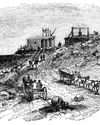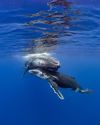Intentar ORO - Gratis
The Economic Impact Of COVID-19
ASIAN Geographic
|AG 02/2020 - 141
Since the SARS outbreak, China has grown from the world’s sixth-largest economy to the second biggest today. The country has been a key growth driver worldwide, with the International Monetary Fund estimating that China alone accounted for 39% of global economic expansion in the past year.
-

While much of the world’s attention is rightly focused on the human toll of COVID-19, the economic toll of the outbreak also has potentially disastrous implications. According to the World Economic Forum, the spreading coronavirus is taking a toll on economic players around the world, from farmers in the Americas, to manufacturers of solar panels in India, to tourism workers across Asia. China, home to the majority of confirmed cases so far, has been dubbed the “world’s factory” due to the significant portion of global manufacturing that now typically takes place there.
Data analysis firm IHS Markit predicts that the new coronavirus outbreak will be worse for the global economy than the 2003 SARS epidemic was – costing the global economy about USD40 billion.
As China is no longer only producing low-cost products like sneakers and sweatpants for the masses as it was during SARS, and has evolved into a crucial element of the global economy, this crisis could create a substantial threat.
China accounted for 4.2 percent of the global economy in 2003, but now determines 16.3 percent of the world’s GDP. Therefore, any slowdown in the Chinese economy sends not ripples, but waves across the globe. The uncertainty in China could also affect global oil prices as China accounted for half of the world’s oil demand growth in 2019.

However, most of the economic cost of the outbreak is not related to the virus, but the panic surrounding it.
Esta historia es de la edición AG 02/2020 - 141 de ASIAN Geographic.
Suscríbete a Magzter GOLD para acceder a miles de historias premium seleccionadas y a más de 9000 revistas y periódicos.
¿Ya eres suscriptor? Iniciar sesión
MÁS HISTORIAS DE ASIAN Geographic

ASIAN Geographic
Cerulean Colossus
A little introduction to the world's biggest fish
6 mins
AG 169

ASIAN Geographic
Tales from the Black Sea
A glimpse of hope
7 mins
AG 169

ASIAN Geographic
The Magnificent Seven
There are seven marine turtle species worldwide, three of which are listed as “Endangered” or “Critically Endangered”. Each have their own habitats, needs and peculiarities, but how much longer will we be able to enjoy their presence on our planet?
4 mins
AG 169
ASIAN Geographic
Ocean Giants
Understanding the enigmatic mantas and other mobula rays
9 mins
AG 169

ASIAN Geographic
10 Top Diving Experiences in the Philippines
The Philippines is renowned worldwide for its breathtaking marine biodiversity, crystal-clear waters, and vibrant coral reefs. Boasting over 7,000 islands, the archipelago offers countless diving spots that cater to beginners and seasoned divers alike. Whether you're seeking thrilling encounters with sharks, exploring world-class wrecks, or immersing yourself in colourful coral gardens, the Philippines has something extraordinary to offer. Here are 10 of the best diving experiences you should add to your bucket list.
1 min
AG 169

ASIAN Geographic
Introducing Hippocampus Unravelling the Seahorse
Seahorses are an elusive species that turn divers giddy with excitement. But what is it about them that fascinates people so much? Quite often, throughout my work and travels, I hear divers say, \"I don't like sharks – they're scary\" or \"Nudibranchs are boring\", but can you ever recall a time when you've heard a diver say that they don't like seahorses? I mean, what is there not to like about this mythical little creature?
3 mins
AG 169

ASIAN Geographic
Go for the Glow
The science behind coral colours
2 mins
AG 169

ASIAN Geographic
Revealed Silver
Known in Latin as argentum, originating from the Sanskrit word argunas meaning \"shining\", silver is often an overlooked metal in comparison to gold, though it has properties that make it a unique and special element.
2 mins
AG 166

ASIAN Geographic
Celebrating the 2023 Rolex Awards for Enterprise Laureate: Liu Shaochuang
As a part of the Perpetual Planet Initiative, the Rolex Awards for Enterprise continues to expand the initiative’s growing portfolio, supporting exceptional individuals with innovative projects in areas such as the environment, science and health, applied technology, cultural heritage, and exploration.
2 mins
AG 166

ASIAN Geographic
The Treasures of Tahiti and the Journey of Giants
For decades, French Polynesia's beguiling islands have adorned travel brochures, alluring honeymooners with turquoise lagoons, overwater bungalows, and lush volcanic peaks. Some 7,000 kilometres from its closest neighbours, and spread over five main island groups, the French territory's real treasures are not just what you see in the splashy brochures. Get ready for untamed, wild, ocean encounters.
6 mins
AG 166
Translate
Change font size

